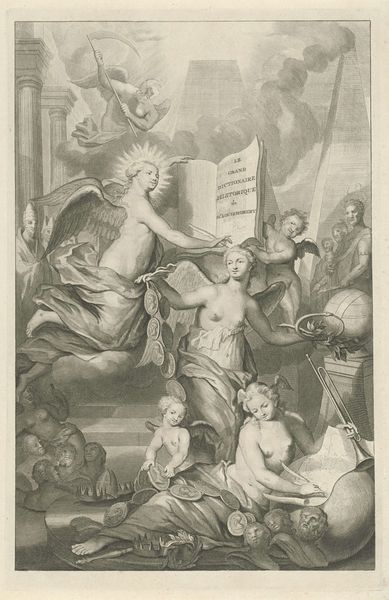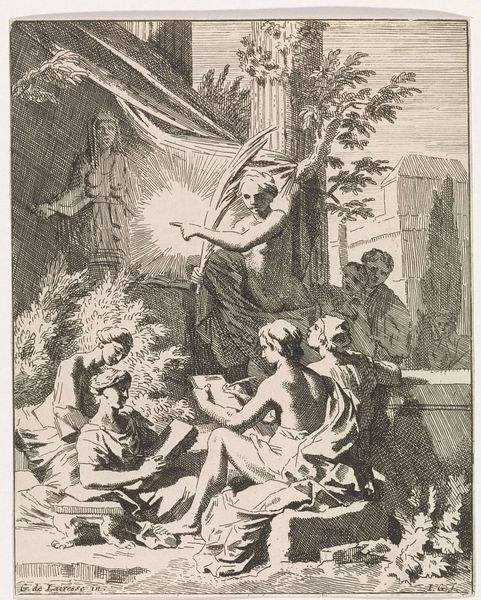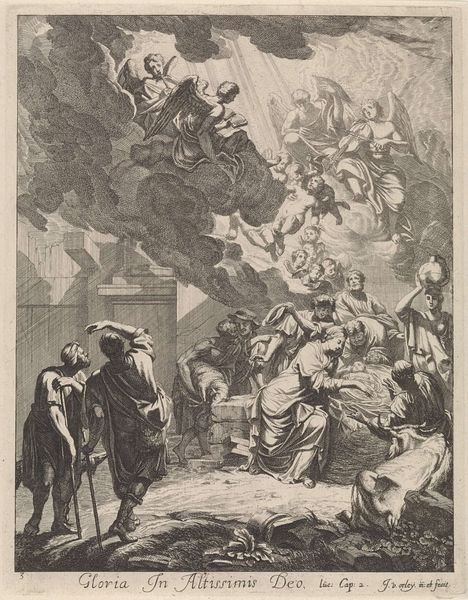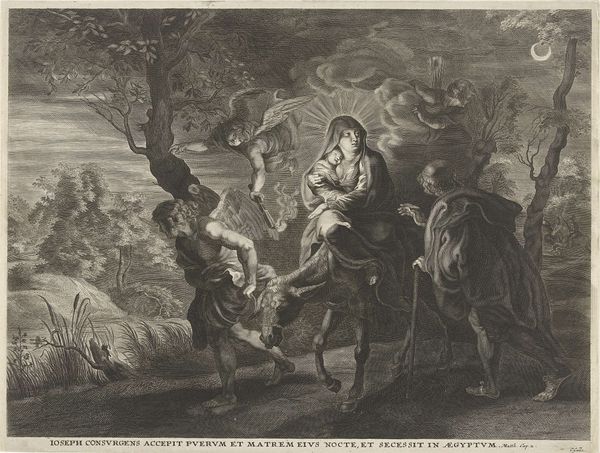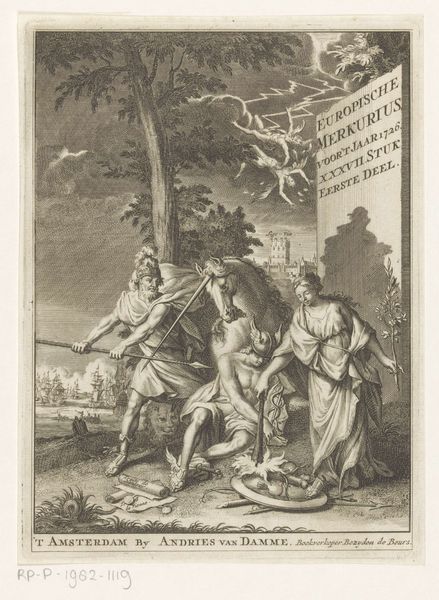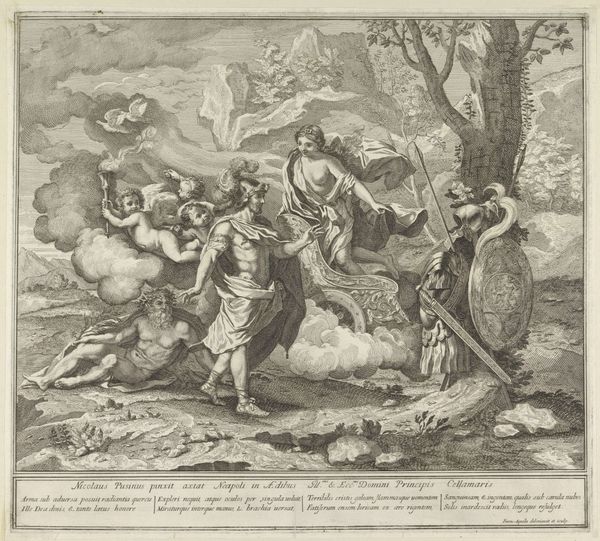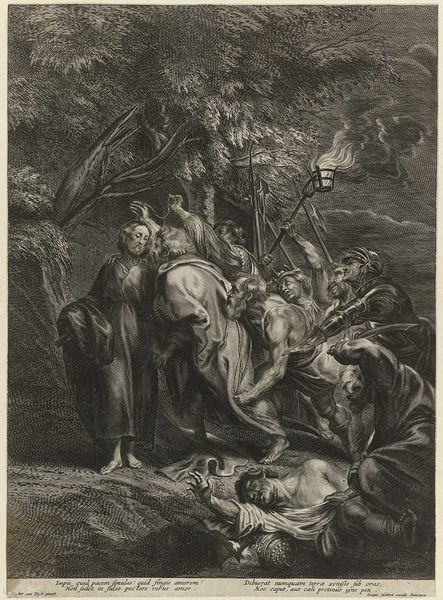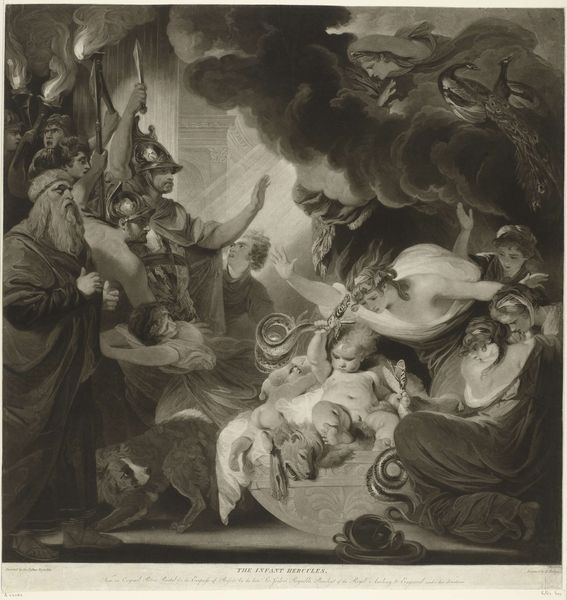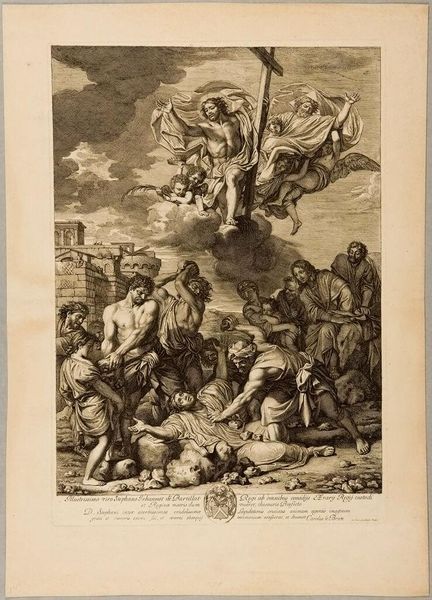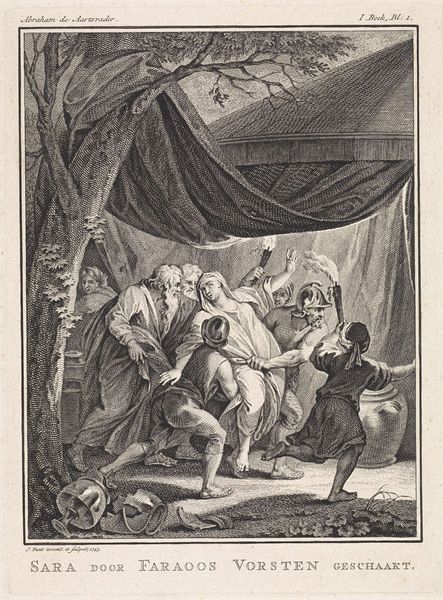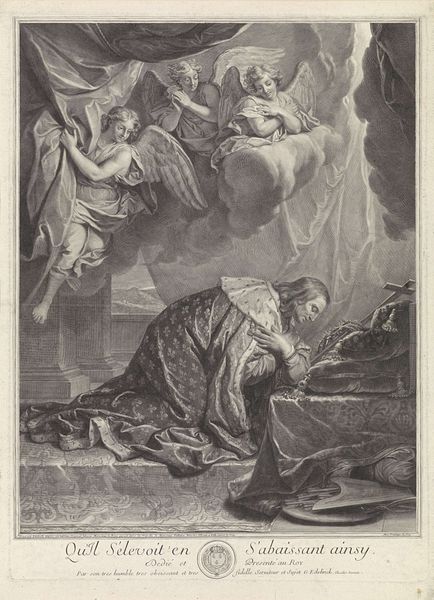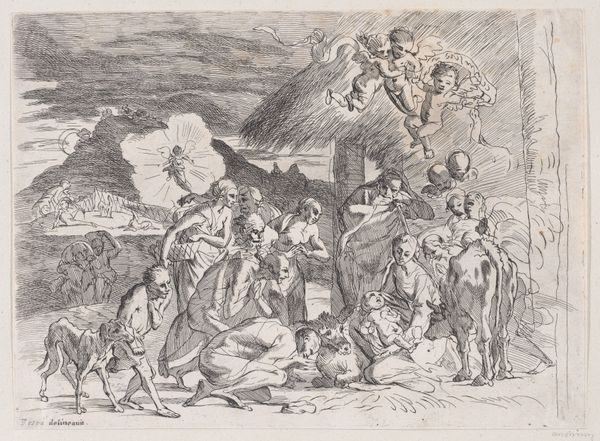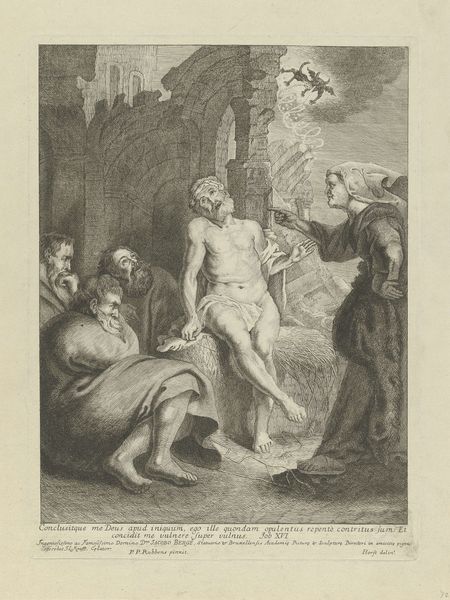
print, engraving
#
narrative-art
#
baroque
# print
#
figuration
#
surrealism
#
history-painting
#
engraving
Dimensions: height 630 mm, width 588 mm
Copyright: Rijks Museum: Open Domain
Editor: This is "Kruisafneming," or "Descent from the Cross," an engraving by Carlo Crespi made after 1694. It’s pretty stark, almost ghostly, with everyone so caught up in their grief. What strikes me is how active some figures are while others seem frozen. What do you see in it? Curator: Ah, yes. Crespi has indeed captured that moment of suspended animation between action and utter despair. The figures cling to the cross, and to each other, seemingly reluctant to fully accept what's happening, creating a potent stillness amid chaos. But look closer: notice how Crespi contrasts the precise, almost clinical rendering of Christ's body with the swirling, baroque drama of the mourners' robes? Do you find this intriguing? Editor: I do! It's like two different styles are clashing. So what does that mean, exactly? Curator: Well, think of it like this: Crespi is operating within a well-established visual language – the theatricality of the Baroque, yes – but injecting his own personal note. Maybe a whisper of personal grief? And that text at the bottom, snippets of redemption promises written in both Latin and French, is not accidental. Perhaps Crespi aimed to use established aesthetics to deliver intimate messages about loss, or even challenge Baroque emotional grandeur? What do you think? Editor: I never thought of it like that. The personal mixed with the performative. It feels much less distant now, less like a historical artwork and more human, somehow. Curator: Precisely! And isn't that the most rewarding thing art can do - reach across centuries to whisper shared experiences?
Comments
No comments
Be the first to comment and join the conversation on the ultimate creative platform.
